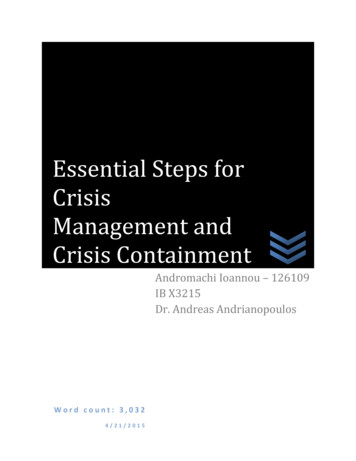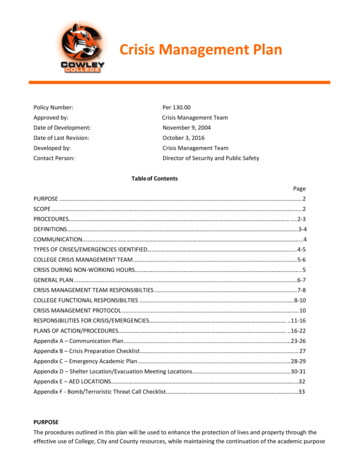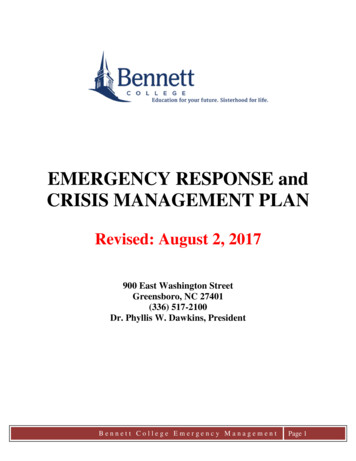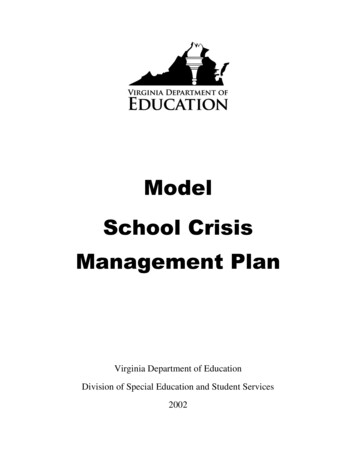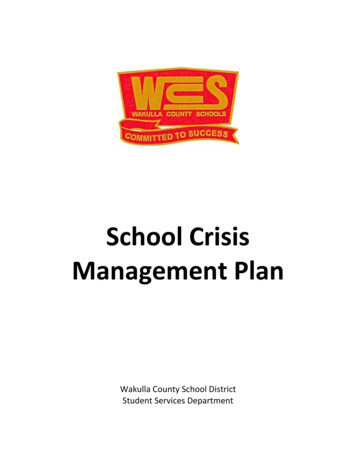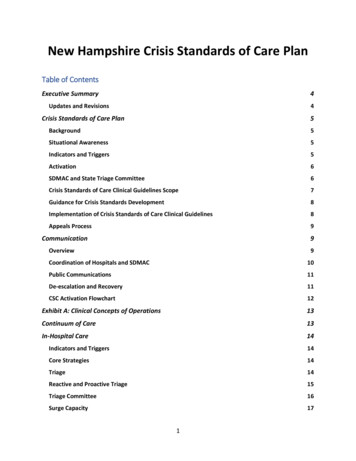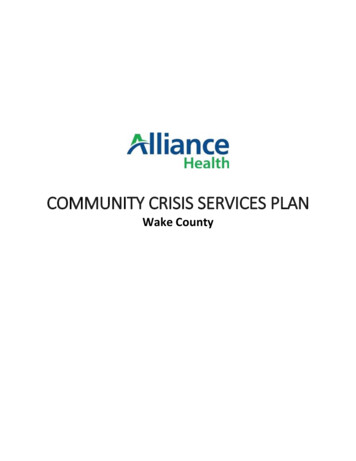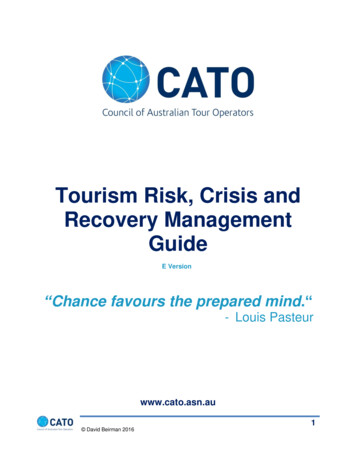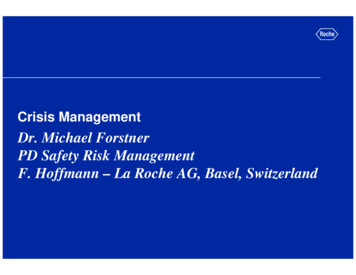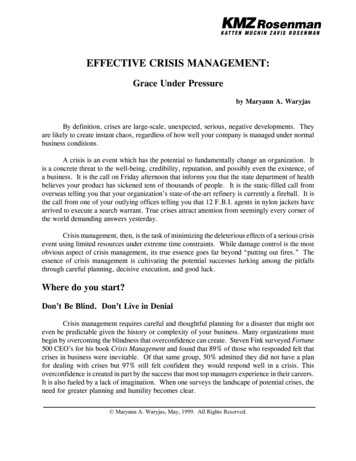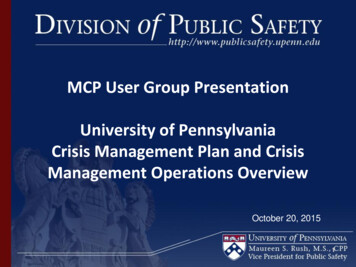
Transcription
MCP User Group PresentationUniversity of PennsylvaniaCrisis Management Plan and CrisisManagement Operations OverviewOctober 20, 20151
Crisis Management Plan Scope and Purpose Encompasses all crisis and emergencies onmain and satellite campuses Provides an administrative framework forthe University in responding to crisissituations2
Crisis Management Plan Goals Preserve and protect the lives of Pennstudents, faculty and staff, and, to theextent possible, to preserve and protectthe lives of animals under the University’scare. Incident stabilization Normalization of University operations3
Crisis Management Plan Three-Tiered Participation– Incident Response Team (IRT)– Incident Management Team (IMT)– Crisis Management Team (CMT)4
Crisis Management PlanIncident Response Team (IRT) Emergency responders who physically go to thescene of the emergency. The IRT is in radio contact with the EOC(Emergency Operations Center) and reports tothe Incident Commander. Perform various functions under the ICS asdirected by the Incident Commander.5
Crisis Management PlanIncident Management Team (IMT) The Incident Management Team (IMT) is theoperations group. The IMT coordinates the response andestablishes an Emergency Operations Center(EOC). The EOC is comprised of representatives of allrelevant emergency response entities. The IMT operates under the “IncidentCommand System” (ICS).6
Crisis Management PlanCrisis Management Team (CMT) The policy group. The CMT makes policy decisions and holdsultimate responsibility for decisions involvingcommunications, evacuation, University closings,and business logistics and normalization. Chaired by the University President or his/herdesignee and is comprised of high-rankingUniversity officials.7
Crisis Management Team Core Members–––––––––PresidentProvost (Co-chair)Executive VP (Co-chair)VP and Chief of Staff for the PresidentSVP and Chief of Staff, Penn MedicineSenior VP and General CounselVP for Public SafetyVP University CommunicationsVP for ISC8
Crisis Management Team Auxiliary Members– The Vice President for Institutional Affairs, President’s Office– The Vice President for Government and Community Affairs– The Secretary of the University– The Vice President for Facilities Services– The Vice President for Human Resources– The Vice President for Business Services– The Vice President for Finance– The Executive Director for Risk Management & Insurance– The Assistant Provost– The Vice Provost for Education– The Vice Provost for Faculty Affairs– The Vice Provost for Global Initiatives– The Vice Provost for Research– The Vice Provost for University Life– The Chaplain9
Crisis Management Plan The Crisis Management Plan defines three levelsof emergency. Potential Emergencies inter StormsHazardous Material IncidentsHurricane/or other natural disastersFloodsCommunications FailuresHostage situationsCivil DisturbancesRadiological AccidentsExplosionsStructural CollapsesTerrorism10
Crisis Management Plan Level 1 (Isolated Critical Incident)– Examples include an assault on a student, or a chemical spill of alimited nature. Level 2 (Localized Critical Incident)– Examples include a building fire, water main break or powerfailure. Level 3 (Major Critical Incident) Examples include a large scale protest, a major snow stormor flood, a major power failure, a terrorist attack or anaccidental release of biological or chemical hazards notconfined to a single or limited location.11
Office of the Vice President for Public Safety The Vice President for Public Safety isresponsible for:– giving the CMT an initial briefing as to thebackground and status of the emergencysituation and what actions, if any, PublicSafety or, if applicable, the IMT has taken;– receiving periodic updates from the IMT andreporting any relevant information to theCMT;12
Office of the Vice President for Public Safety(Continued) The Vice President for Public Safety isresponsible for:– directing messages to be delivered throughthe UPenn Alert Emergency NotificationSystem, in coordination with the ExecutiveVice President and the Provost; and– disseminating information to local radio andtelevision stations in coordination with the VPfor University Communications.13
14
Communication On-Demand Call Bridging:– The UPennAlert System allows for specific groups (e.g. CMT) to beautomatically connected to a conference call. The need to convene in person, though eventually necessary, isnot needed to activate the CMT Decision time and total response time is dramaticallydecreased15
Crisis Management Plan Crisis Management Team (CMT) The policy group. The CMT makes policy decisions and holds ultimate responsibility for decisions involving communications, evacuation, University closings, and business logistics and normalization. Chaired by the University President or his/her designee and is comprised of high-ranking
